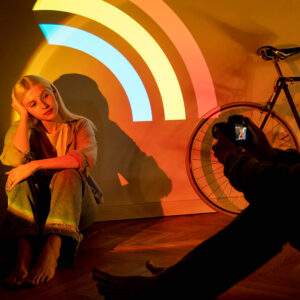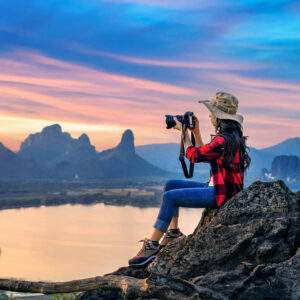Regarding photography, light isn’t limited to technical areas but almost completes the image. Understanding and using the power of lighting may significantly improve the quality and impact of your photos, regardless of whether you’re a devoted amateur or professional photographer. Pick any image; you will find the light has played a vital role in giving a new view to the image. In this blog, we’ll examine lighting’s significance in photography and how you may use it to improve your visual storytelling.
Lighting techniques for great photographs
- Light Elevates the Mood and Emotion
Light has the amazing capacity to elicit feelings and establish the tone of an image. While harsh, direct sunlight can provoke drama and intensity, and soft can create a calm and quiet mood. Photographers may convey various emotions and create more in-depth narratives through their photos by adjusting the direction and quality of light.
- Improves of Depth and Dimension
When there is proper lighting, be it natural or artificial, the image gets more depth and character with proper lighting. With bright lights, there will be enough shadows, adding texture and making your subjects stand out from the background. This three-dimensional quality offers your photographs a more realistic and interesting appearance.
- Textures and Details
Intricate details and textures may go unnoticed and can be revealed through the interaction of light and shadow. For example, clicking a textured surface during the golden hour can highlight the texture and give your photo a cozy, inviting glow.
- Making a composition and visual interest
An effective compositional tool is lighting. It can draw attention to the main topic, emphasize exciting details, and produce dynamic compositions. For instance, backlighting can produce creative, appealing silhouettes that outline the subject.
- Creating the Ambience and Scene
Lighting is vital in establishing a controlled setting in portrait, landscape, and product photography genres. Photographers can adjust the illumination with studio lighting setups to match the intended style and topic. Lighting creates the mood for the story, whether it’s a gently lit portrait or a stark fashion shot.
- Help to Overcome Shoot Challenges
Photographers must use creativity to overcome problems posed by various lighting situations. Long exposures and artificial lighting are two approaches that can be used in low-light conditions to produce magnificent nighttime or indoor scenes. However, perfecting the technique of softening intense light can result in stunningly balanced outdoor portraits.
- Continuous Observation
One of the best ways to get the perfect image with subtle light is to keep practicing. Your abilities will gradually improve as you practice various lighting techniques and see how light reacts in diverse surroundings. The best is to learn from other established photographers; their light use can give important insights into producing powerful photos.
Conclusion
Lighting is the fundamental component of photography. It involves more than just taking pictures; it consists of manipulating light to create images that tell tales, arouse feelings, and inspire awe. Lighting is your most effective tool in the quest for excellent visual storytelling, whether you’re going for the subtle glow of dawn or the vivid colors of a sunset. If you want to learn more about lighting in photography, the best is to join CAP Academy, where you will get practical learning experience.











